Diagnostic différentiel : doigt à ressaut, lésion de la bande sagittale subluxante ou bande latérale subluxante
Classé sous Évaluation
Diagnostic différentiel : doigt à ressaut, lésion de la bande sagittale subluxante ou bande latérale subluxante
Les thérapeutes de la main rencontrent fréquemment des patients présentant des douleurs aux doigts, des claquements et des difficultés de glissement des tendons. Parmi les affections les plus souvent confondues, on trouve : déclenchement doigt, subluxation lésion de la bande sagittale, et subluxation Bande latérale. Chacune de ces pathologies implique des structures anatomiques et des perturbations biomécaniques différentes, mais leurs caractéristiques cliniques communes peuvent compliquer un diagnostic précis. Comprendre les subtiles différences de présentation et réaliser des examens physiques ciblés est essentiel pour une planification thérapeutique appropriée.
Doigt de déclenchement La ténosynovite sténosante est une affection caractérisée par un pincement du tendon fléchisseur au niveau de la poulie A1, généralement dû à un épaississement ou à une inflammation du tendon ou de la poulie. Les patients ressentent souvent une sensation douloureuse de blocage au niveau de l'articulation métacarpo-phalangienne (MCP), le plus souvent au niveau du majeur ou de l'annulaire. À l'examen, la flexion passive est généralement fluide, mais l'extension active peut rencontrer une résistance, suivie d'un relâchement brutal, d'où le terme « […]déclenchement« effet » (Makkouk et al., 2008). La palpation révèle souvent un nodule sensible au niveau du pli palmaire MCP.
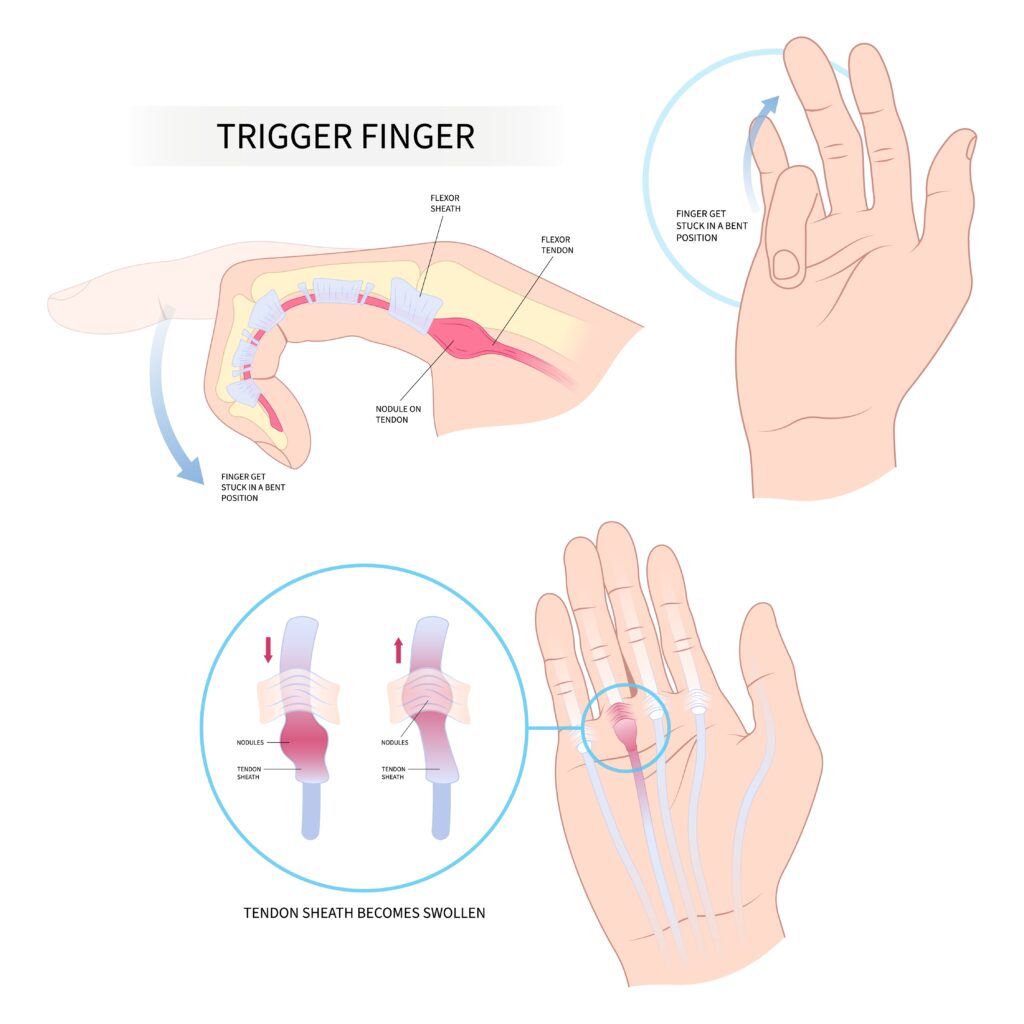
Subluxation de la bande sagittale Blessure, souvent appelée « articulation du boxeur », survient lorsque la bande sagittale ne parvient pas à stabiliser le tendon extenseur au-dessus de l'articulation MCP. Cette affection est plus fréquente au niveau du doigt long en raison de son amplitude accrue et de sa sensibilité aux traumatismes. Cliniquement, les patients peuvent signaler un claquement ou un déplacement du tendon extenseur lors de la flexion et de l'extension de la MCP. Le signe caractéristique de l'examen physique est une subluxation ulnaire visible ou palpable du tendon extenseur lors de la flexion et de l'extension de la MCP avec résistance (Rayan et Young, 2006). La douleur est généralement localisée dorsalement au-dessus de l'articulation MCP, et un gonflement peut être présent.
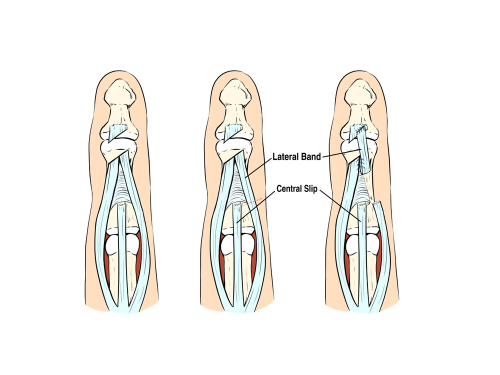
Subluxation de la bande latérale Les blessures sont moins fréquentes et surviennent souvent chez les patients atteints de troubles du tissu conjonctif (par exemple, polyarthrite rhumatoïde) ou suite à un traumatisme. Les bandes latérales, qui contribuent à l'extension de l'IPP, peuvent se subluxer en vol ou en dorsal en raison d'une rupture ou d'une laxité des ligaments rétinaculaires transverses. En cas de subluxation en vol, les bandes latérales peuvent agir comme des fléchisseurs de l'articulation IPP plutôt que comme des extenseurs, imitant une déformation en boutonnière. À l'examen, les thérapeutes peuvent remarquer une flexion de l'IPP avec hyperextension de l'IPD et observer un mouvement latéral de la bande lors d'une flexion/extension active de l'IPP. La palpation peut détecter une instabilité de la bande lors des mouvements de l'IPP avec résistance (Harris et Rutledge, 2016).
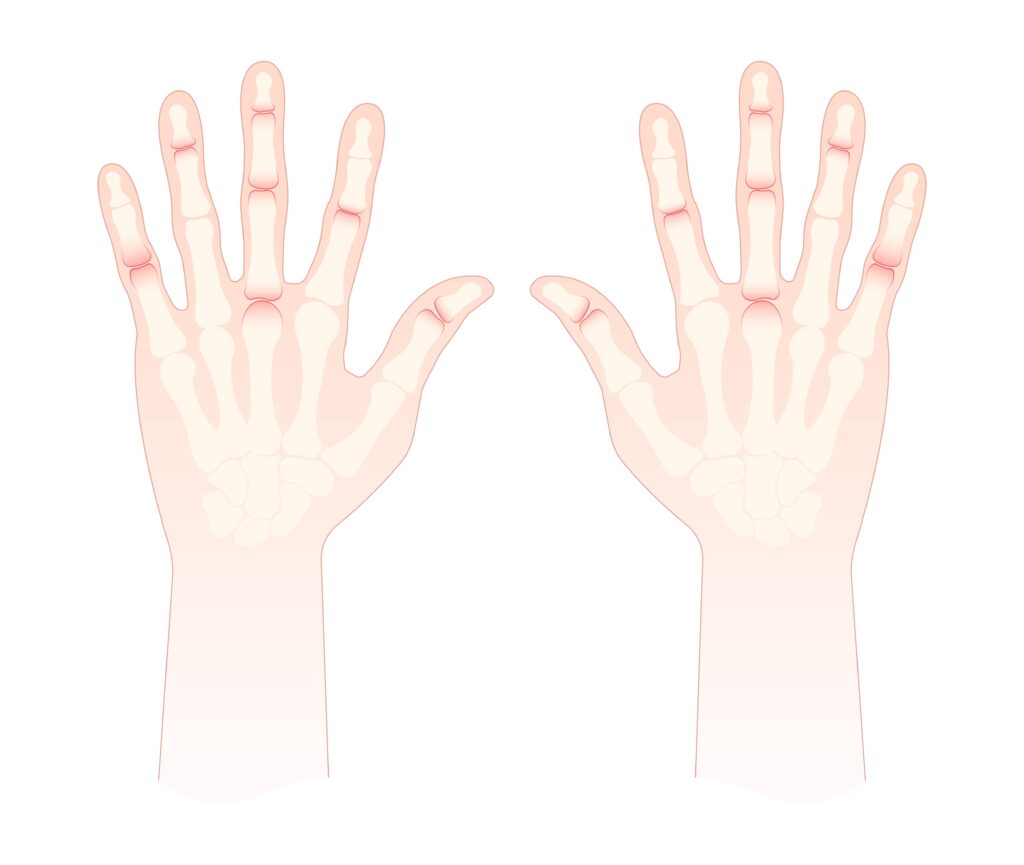
Ces affections sont souvent confondues, car elles peuvent toutes se manifester par des claquements, des douleurs près de l'articulation MCP et un dysfonctionnement lors de l'excursion tendineuse. Par exemple, subluxation la bande sagittale peut imiter déclenchement doigt à un stade précoce, lorsque le déplacement du tendon provoque une sensation de pincement. De même, subluxation Les bandes latérales peuvent être confondues avec une pathologie des bandes sagittales si des douleurs dorsales et des claquements sont présents, mais mal localisés. Sans une évaluation approfondie, ces affections peuvent être mal diagnostiquées, entraînant des résultats thérapeutiques sous-optimaux.
Pour les différencier, l’emplacement et la direction du déplacement du tendon lors du mouvement résisté sont essentiels. Déclenchement Le doigt implique toujours le système tendineux fléchisseur et est palpable en palmaire. Les lésions de la bande sagittale entraînent une instabilité dorsale au niveau du MCP, tandis que la subluxation de la bande latérale affecte la mécanique de l'articulation IPP. Des tests de provocation, tels que l'extension résistante du MCP (pour la bande sagittale), la flexion active de l'IPP (pour la bande latérale) ou la palpation de la poulie A1 lors du mouvement du doigt (pour le doigt à ressaut), peuvent aider à isoler la pathologie.
Un diagnostic précis nécessite également de prendre en compte les antécédents du patient. Les lésions de la bandelette sagittale font souvent suite à un traumatisme par perforation ou par hyperextension, tandis que déclenchement L'instabilité du doigt est généralement atraumatique et liée à une surutilisation ou à des affections inflammatoires. L'instabilité de la bandelette latérale peut être liée à une maladie systémique ou à un stress articulaire chronique. L'imagerie, notamment l'échographie dynamique, peut être utile lorsque le diagnostic reste incertain.
En résumé, bien que déclenchement doigt, subluxation lésion de la bande sagittale, et subluxation Les bandes latérales peuvent toutes présenter des symptômes similaires. La compréhension de leur anatomie et la réalisation d'examens physiques ciblés permettent une différenciation précise. Une reconnaissance précoce est essentielle pour guider une intervention conservatrice ou chirurgicale et assurer une récupération fonctionnelle optimale.
Les références
Harris, A., et Rutledge, C. (2016). Blessures à la main : un guide pratique pour le diagnostic et la prise en charge. Springer.
Makkouk, AH, Oetgen, ME, Swigart, CR et Dodds, SD (2008). Doigt à ressaut : étiologie, évaluation et traitement. Revues actuelles en médecine musculo-squelettique, 1(2), 92–96. https://doi.org/10.1007/s12178-008-9012-1
Rayan, GM et Young, BT (2006). Articulation du boxeur : diagnostic et traitement. Journal de chirurgie de la main, 31(8), 1383–1388. https://doi.org/10.1016/j.jhsa.2006.05.009
Wolf, JM, et Delaronde, S. (2009). Évaluation échographique dynamique des lésions de la bande sagittale. Journal de chirurgie de la main, 34(4), 712–715. https://doi.org/10.1016/j.jhsa.2009.01.007
3 commentaires
Laissez un commentaire
Plus à lire
Découvrir les liens entre le doigt à gâchette et la maladie de Dupuytren
Découvrir les liens entre Trigger Finger et Dupuytren Par : Tayer Roost Référence : Yang, Gehring, M., Bou Zein Eddine, S. et Hettinger, P. (2019). Association entre ténosynovite sténosante et maladie de Dupuytren de la main. Chirurgie plastique et reconstructive. Ouvert mondial, 7(1), e2088-e2088. https://doi.org/10.1097/GOX.00000000000002088 The Skinny : Cette revue rétrospective des dossiers a discuté de la possibilité d'une corrélation entre la sténose…
En savoir plusParalysie du guidon également connue sous le nom de compression du nerf ulnaire
Paralysie du guidon, également connue sous le nom de compression du nerf ulnaire La paralysie du guidon, également connue sous le nom de compression du nerf ulnaire, est une affection couramment ressentie par les cyclistes en raison d'une pression prolongée sur le nerf ulnaire au niveau du poignet dans une zone appelée canal de Guyon. Cette pression peut se produire en exerçant une pression sur le guidon ou en serrant fermement le guidon. …
En savoir plusLa fonction des ligaments articulaires glénohuméraux
Ligaments de l'articulation glénohumérale L'articulation glénohumérale (GH) est composée de la tête de l'humérus et de la fosse glénoïde. La fosse est relativement petite par rapport à la tête humérale, ce qui rend l'articulation très mobile, ce qui entraîne également un risque accru d'instabilité. Le labrum glénoïde est un rebord fibrocartilagineux fixé autour de la…
En savoir plusQuel est le véritable métier des Lumbricals ?
Crowley, JS, Meunier, M., Lieber, RL et Abrams, RA (2020). Les Lumbricals ne sont pas le cheval de bataille de l’extension numérique et ne détendent pas leur propre antagoniste. Le Journal de Chirurgie de la Main. The Skinny : Que font les lumbricals ? Il existe une croyance de longue date selon laquelle les lumbricals agissent comme une force contraire au…
En savoir plusInscrivez-vous pour recevoir des mises à jour directement dans votre boîte de réception !
Inscrivez-vous avec nous et nous vous enverrons régulièrement des articles de blog sur tout ce qui concerne la thérapie des mains, des notifications chaque fois que nous mettons en ligne de nouvelles vidéos et tutoriels, ainsi que des documents, des protocoles et d'autres informations utiles.


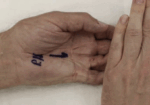
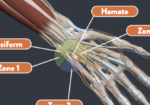
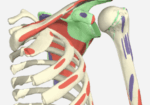


Merci d'avoir partagé!
Quelle excellente analyse concise de ces trois pathologies aux manifestations similaires. Merci de partager !
Merci pour ce résumé concis 👍🏻